Thinking About a Rare Cat? Here’s What You *Really* Need to Know
I’ve been wrapped up in the world of unique cat breeds for a long, long time. And even after all these years, some moments just stick with you. I’ll never forget the first time I saw a true Korat at a national show. It wasn’t just another grey cat; its coat seemed to drink in the light and shimmer it back out, creating this incredible silver halo. And the eyes… honestly, the intensity of their green was startling. It moved with a quiet confidence that just made you stop and watch. That cat was a little piece of living art, worlds away from the everyday tabbies and tuxedos we all know and love.
In this article
- In-Depth Looks at Some Truly Remarkable Breeds
- 1. The Korat: The Good Luck Cat
- 2. The Burmilla: The Happy Accident
- 3. The LaPerm: The Curls from the Countryside
- 4. The Turkish Van: The Swimming Cat
- 5. The Devon Rex: The Pixie-Faced Imp
- 6. The Kurilian Bobtail: The Gentle Russian Giant
- 7. The Norwegian Forest Cat: The Viking’s Cat
- 8. The Egyptian Mau: The Spotted Sprinter
- 9. The Sokoke: The Forest Cat from Kenya
- 10. The Minskin: The Modern Mix
- The Bottom Line: Responsibility, Cost, and Finding Your Cat
- Inspirational Gallery with Photos
But when we talk about a “rare” cat, what does that even mean? It’s not just about low numbers. It’s a mix of things. Some breeds are rare simply because they developed in one specific, isolated part of the world for centuries. Others are rare because they’re brand new on the scene, the result of careful, modern breeding programs. And sometimes, a breed is rare because the very genes that make it look so unique are tricky to work with. So, this isn’t just a list of exotic pets. It’s a real-talk guide to the stories, the science, and the serious responsibility that comes with these amazing animals.
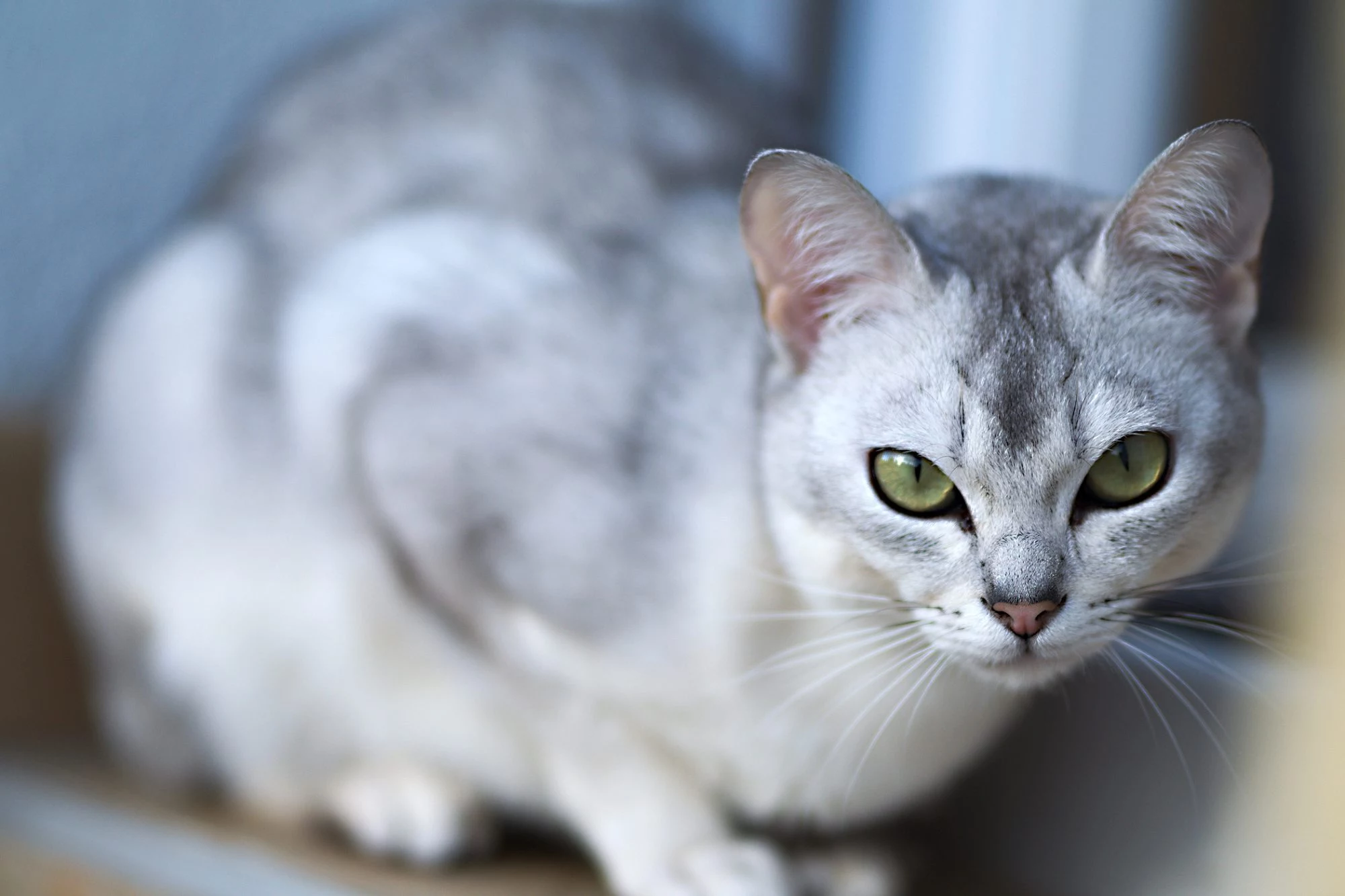
In-Depth Looks at Some Truly Remarkable Breeds
Let’s dive into some breeds that I’ve had the pleasure of knowing, judging, or just plain obsessing over. For each one, I’ll give you the inside scoop—the real story, the science behind their look, and what it’s actually like to have one curled up on your couch.
1. The Korat: The Good Luck Cat
The Korat is an ancient breed from Thailand, traditionally considered a living symbol of good fortune. They were so treasured that they were given as special gifts, never sold. This history of being kept close to home is a big reason why they’re still uncommon in the rest of the world.
The Look: That stunning coat is what it’s all about. It’s a dilution of black, creating a deep blue-grey. But the magic is in the silver-tipped hairs, which create a halo effect you won’t see in a Russian Blue or Chartreux. There should be absolutely no stripes or other colors. Their eyes are just as special, starting as amber in kittens and slowly maturing into a brilliant green over a few years.
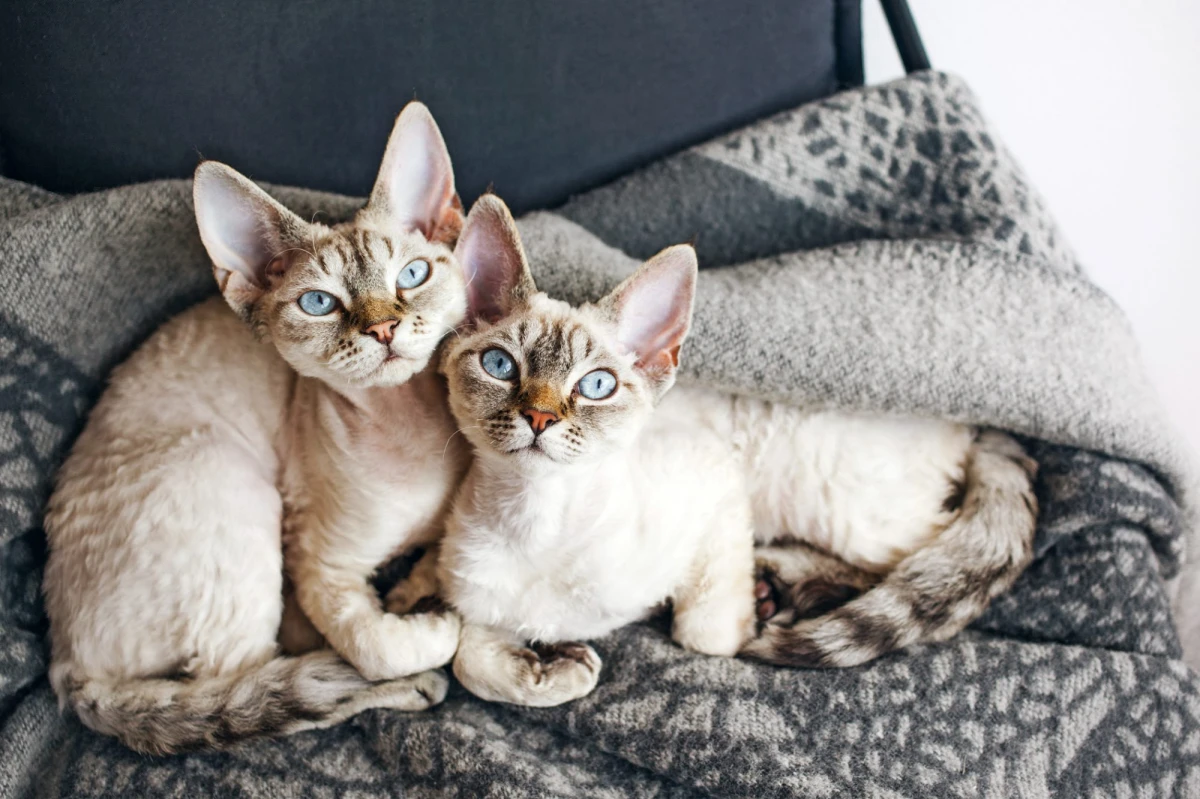
Living With One: Korats are whip-smart and bond deeply with their people. This is NOT an independent cat. They thrive on attention and can get genuinely down if left alone too much. Their coat is low-maintenance, but their emotional needs are high. A quick tip: Their single coat just needs a simple weekly brushing to stay sleek.
- Best For: Someone who is home a lot and wants a deeply devoted, almost dog-like companion.
- Price Tag: Expect to pay between $1,200 and $2,000 for a kitten from a health-tested line.
- Ask a Breeder: “Do you test your breeding cats for gangliosidosis (GM1 and GM2), and can I see the results?” This is a fatal genetic disease, and a DNA test is available. Any ethical breeder will do this, no exceptions.
2. The Burmilla: The Happy Accident
I have such a soft spot for this breed. It started as a happy accident from an unplanned litter between a Chinchilla Persian and a Burmese. The kittens were so charming that a dedicated program began to establish them as a real, healthy breed. They’re still quite rare as breeders work to perfect the look while ensuring a diverse gene pool.
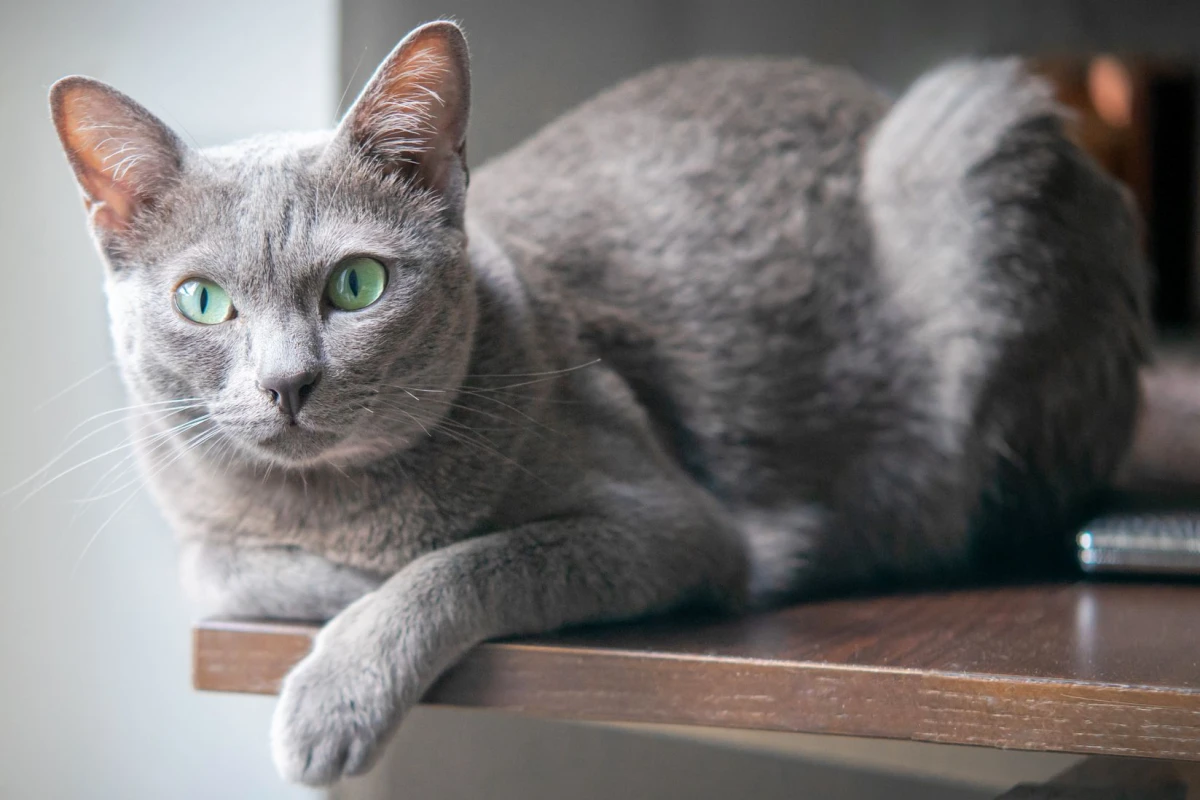
The Look: The Burmilla gets the best of both worlds. It has the sturdy, muscular body of a Burmese but with a short, sparkling, silver-tipped coat from its Persian side. This silvery look comes from a dominant gene that stops color from developing all the way down the hair, leaving just the tips pigmented. It’s a gorgeous effect.
Living With One: They blend the playful, sometimes goofy nature of the Burmese with the sweeter, more laid-back vibe of the Persian. They’re smart, social, and a great fit for families. A bit less demanding than a Burmese, but definitely more outgoing than a Persian.
- Best For: Families or individuals looking for a social, playful, but gentle companion.
- Price Tag: A well-bred Burmilla kitten typically costs between $1,500 and $2,500.
- Ask a Breeder: “Since this breed has Persian ancestry, do you screen your cats for Polycystic Kidney Disease (PKD)?” Reputable breeders should provide proof of genetic testing or show that their lines are certified PKD-free.
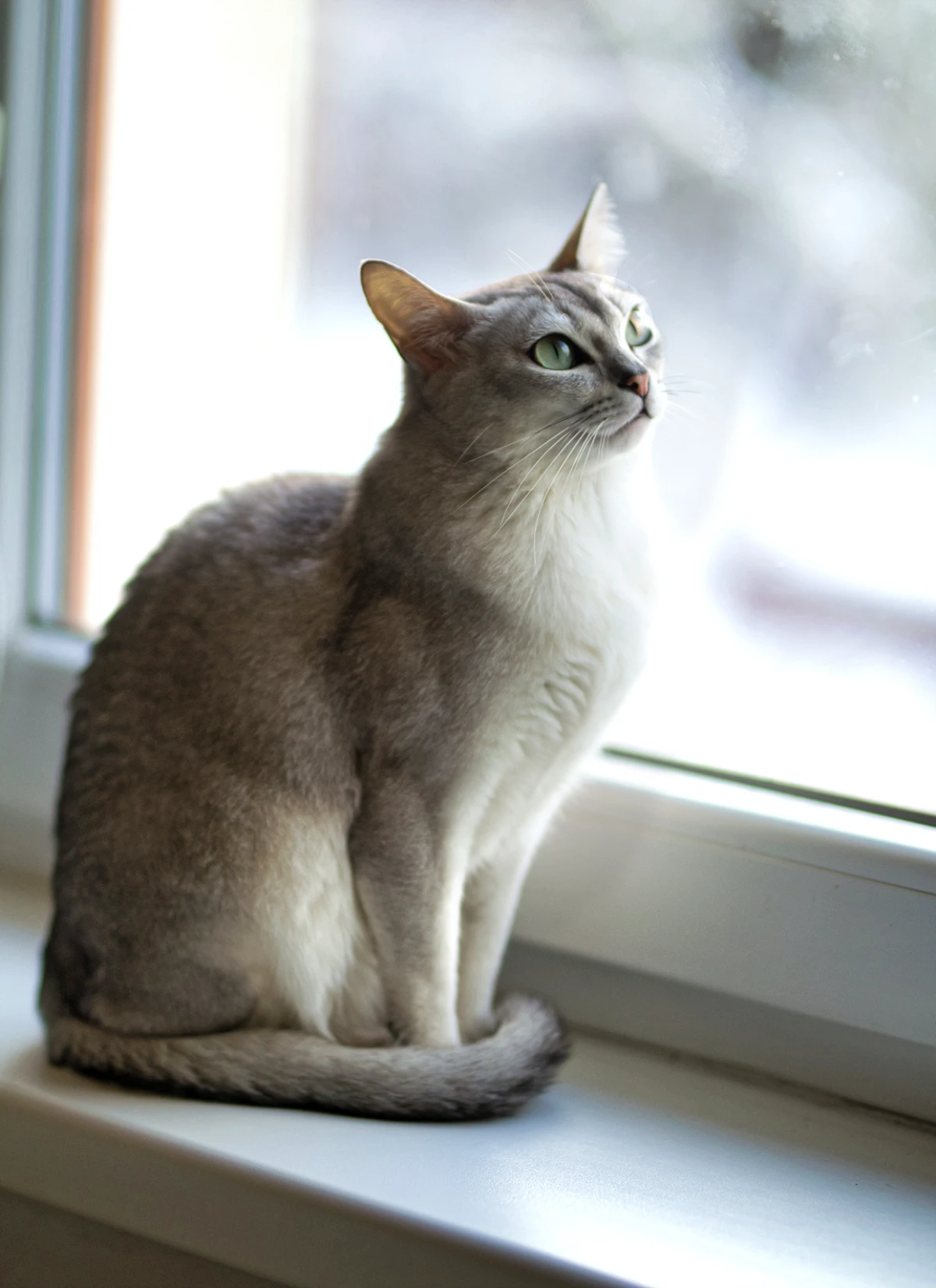
3. The LaPerm: The Curls from the Countryside
The LaPerm story is amazing—it started with a completely bald kitten born in a litter on a farm. A few weeks later, that kitten grew a soft, curly coat. This was a spontaneous, natural mutation! The breed was developed from this humble beginning, which gives it a healthy, robust genetic background.
The Look: The coat is caused by a dominant Rex gene, and it can range from tight ringlets to loose, shaggy waves. From my experience handling them, the coat feels surprisingly textured and springy, not silky soft. This rustic feel is part of their charm, and the sparse undercoat is the secret to why it doesn’t mat easily.
Living With One: LaPerms are total lovebugs. They are people-oriented and often want to be right in the middle of things, whether that’s riding on your shoulder or curled up in your lap. They’re also clever and curious. And good news: despite the curls, their coat is a breeze to care for and they tend to shed less than many other breeds. A quick comb-through with a wide-tooth comb once a week is plenty.
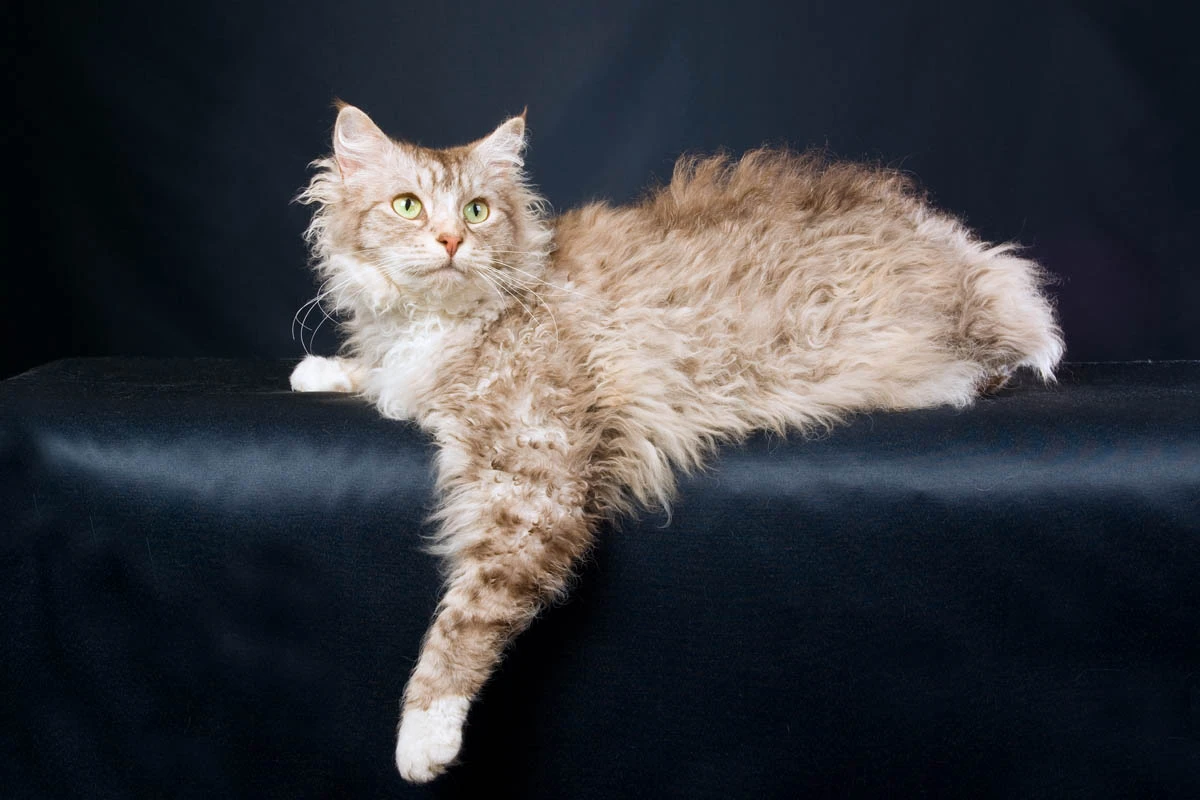
- Best For: People who want an affectionate, low-shedding cat with a unique look.
- Price Tag: Generally in the $1,000 to $1,800 range.
- Ask a Breeder: Because they come from such a healthy, diverse background, there aren’t many breed-specific genetic tests to ask about. Instead, focus on general health: “Can you tell me about the health and longevity of your lines?”
4. The Turkish Van: The Swimming Cat
This is an ancient, natural breed from the mountainous Lake Van region of Turkey. For a long time, the Turkish government considered them a national treasure and restricted their export, which is why they remain relatively rare.
The Look: The classic Turkish Van is a big, powerful cat defined by the “Van pattern”—a mostly white body with color restricted to the head and tail. What many don’t realize is that their coat has a unique, cashmere-like texture that’s naturally water-resistant. It lacks a dense undercoat, so it dries quickly. This isn’t for looks; it’s a functional trait from its homeland.
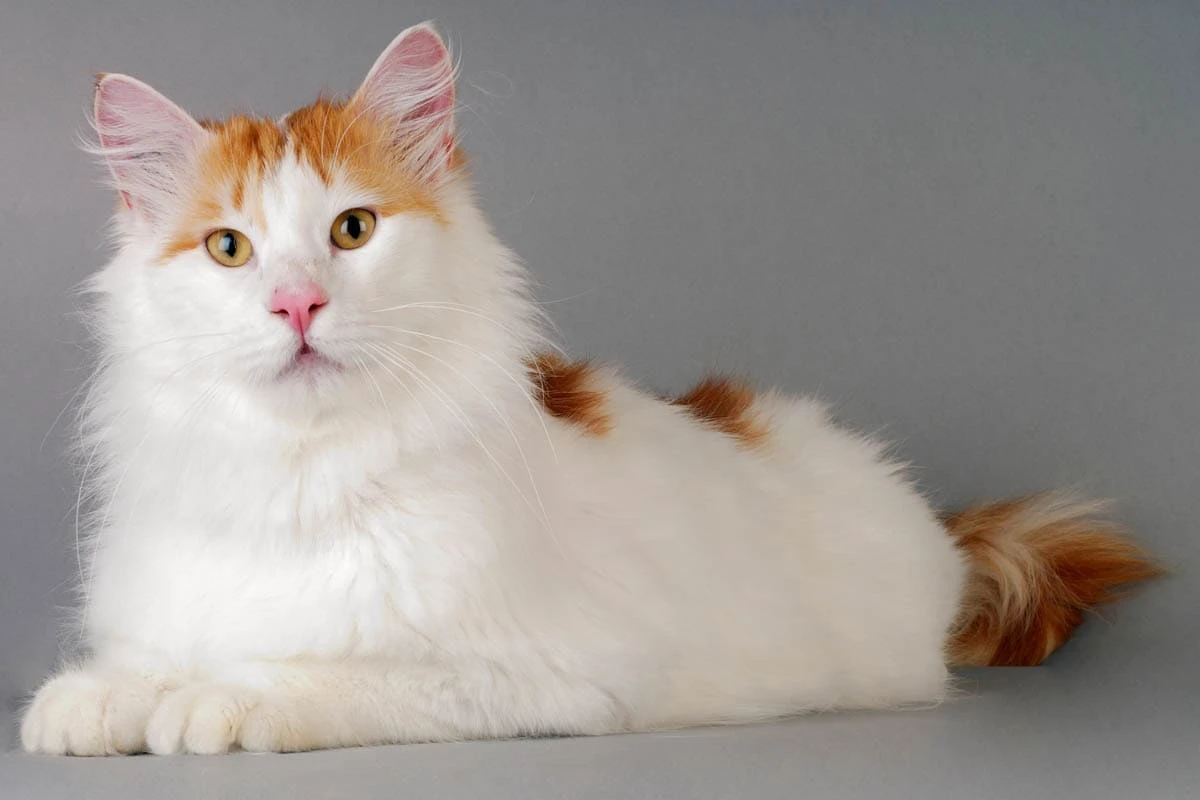
Living With One: This is not a couch potato. Vans are incredibly smart, energetic, and active. They are amazing jumpers and will absolutely explore the top of your kitchen cabinets. And yes, their fascination with water is real! You might find one batting at the faucet or trying to join you in the shower. They need lots of interactive play to stay happy.
- Best For: An active household with lots of vertical space and owners who enjoy interactive play.
- Price Tag: Expect a kitten to be in the $1,200 to $2,000 range.
- Ask a Breeder: “How do you socialize your kittens to ensure their energetic nature is channeled positively?” This is a great question for a high-intelligence breed.
5. The Devon Rex: The Pixie-Faced Imp
Forget the coat for a second—the first thing you notice about a Devon Rex is the face. With their high cheekbones, short muzzle, and huge, low-set ears, they look like little pixies or aliens. Their personality is just as unique. I often tell people if you want a cat that’s part monkey, part dog, and part cat, the Devon is for you. I once saw one at a show that had learned to unzip its owner’s purse to steal treats. They are true little troublemakers!
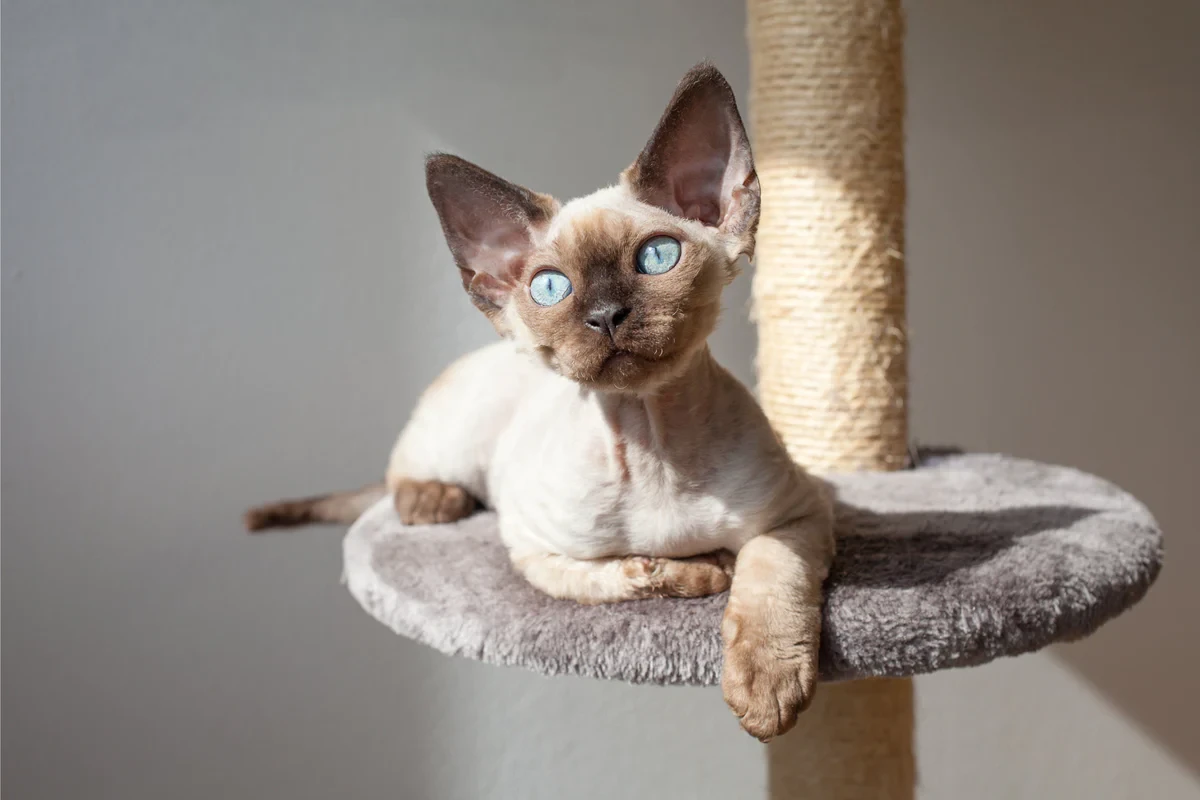
The Look: The Devon’s soft, wavy coat is caused by a completely different gene than other Rex cats. Their coat is very fine and can be prone to bald patches from over-grooming. Their whiskers are also short and crinkly. They aren’t truly hypoallergenic, but their light shedding can make them a better fit for some allergy sufferers.
Living With One: Devons are social butterflies. They are high-energy clowns that will play fetch, learn tricks, and demand to be part of everything. They hate being alone. Heads up! Their large ears need to be cleaned gently but regularly to prevent wax buildup, and their skin can get oily, so an occasional bath is a good idea.
- Best For: People who are home a lot and want a “velcro cat” that is constantly entertaining and involved in family life.
- Price Tag: These little pixies usually cost between $1,500 and $2,500.
- Ask a Breeder: “Do you perform annual heart screenings (echocardiograms) on your breeding cats for HCM, and can I see the latest reports for this kitten’s parents?” This is a non-negotiable question for this breed.
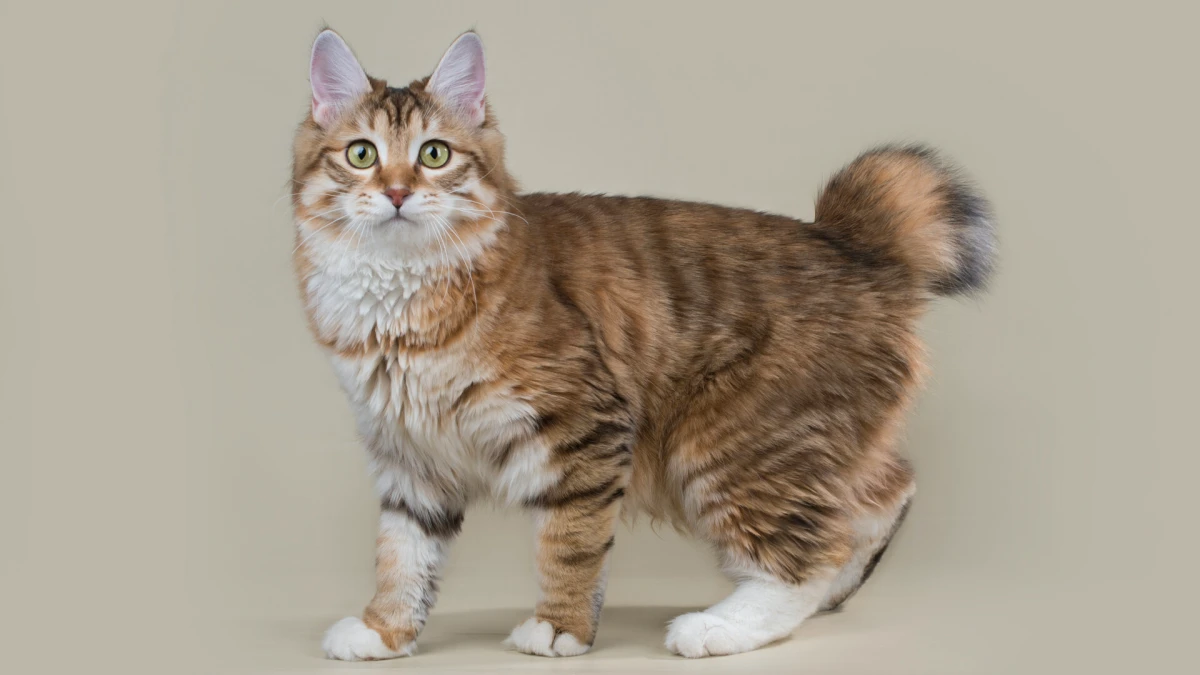
6. The Kurilian Bobtail: The Gentle Russian Giant
This is a natural breed from the Kuril Islands, a volcanic chain between Russia and Japan. They’re known there as fantastic hunters, but they have a surprisingly gentle soul. This breed is quite popular in Russia and Europe but is still a very rare sight in North America.
The Look: The tail is their calling card, and it’s like a fingerprint—no two are the same. It’s a natural, harmless mutation that results in a short, kinked, pom-pom-like tail. It’s not docked! They are powerful, muscular cats with back legs that are slightly longer than their front, giving them incredible jumping power.
Living With One: Despite their wild-looking origins, Kurilians are known for being adaptable, intelligent, and great with kids and even dogs. They are active and playful, so get ready with the wand toys and laser pointers. Grooming is easy, especially for the shorthaired version. Because they’re a natural breed, they are generally very healthy.

- Best For: Families, even those with other pets, who want a playful, intelligent cat with a wild look but a gentle heart.
- Price Tag: Rarity drives the price here. Expect a range of $1,800 to $3,000 or more, especially in North America.
- Ask a Breeder: “Can you tell me about the temperament of the parents? I’m looking for a [playful/calm] personality.”
7. The Norwegian Forest Cat: The Viking’s Cat
While more common than they used to be, a truly well-bred Norwegian Forest Cat, or “Wegie,” is still a sight to behold. They are a breed shaped by the harsh Scandinavian climate, and it shows. The breed nearly vanished due to interbreeding with common house cats, but a dedicated conservation program in Norway saved them.
The Look: Okay, so how do you tell a Wegie from a Maine Coon? Look at the head. A Wegie has a distinct triangular head with a perfectly straight profile from brow to nose tip—no break or curve. Their double coat is also incredible. It’s fully waterproof; I’ve seen them sit in a light rain totally unbothered as the water just rolls off. They are big cats that mature slowly, not reaching their full, glorious size until they’re about five years old.
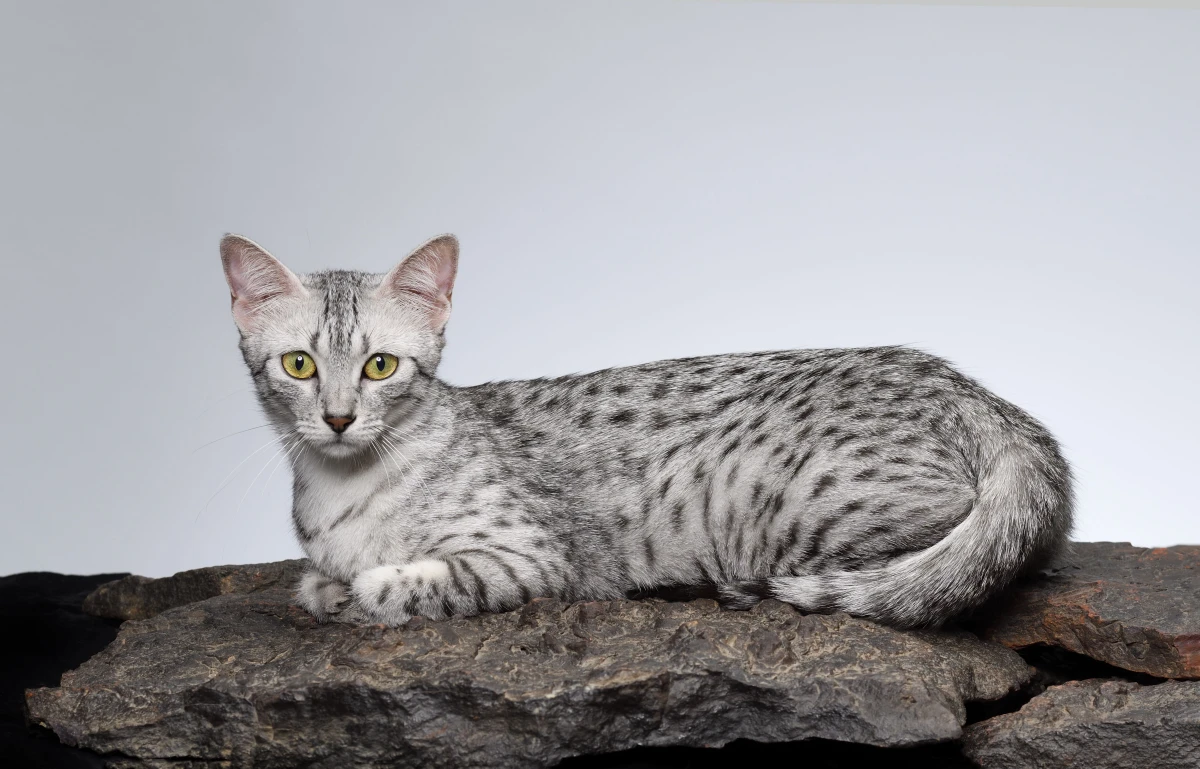
Living With One: Wegies are gentle giants. They’re friendly and relatively calm but are climbers by nature. A tall, sturdy cat tree isn’t a luxury; it’s a necessity. They need a good brushing, especially in the spring when they shed that heavy winter undercoat, or you’ll be dealing with some serious mats.
- Best For: Calmer households that can provide plenty of vertical climbing space for a gentle giant.
- Price Tag: Typically between $1,000 and $1,800.
- Ask a Breeder: “Do you screen for hip dysplasia and HCM in your breeding cats?” These are potential concerns in many large cat breeds.
8. The Egyptian Mau: The Spotted Sprinter
Here’s where things get interesting. While the Mau looks just like the cats in ancient Egyptian art, modern DNA shows that the breed’s foundation is actually more recent. So, it’s a cat with an ancient look but a modern, and very small, gene pool, which is what makes it so rare.
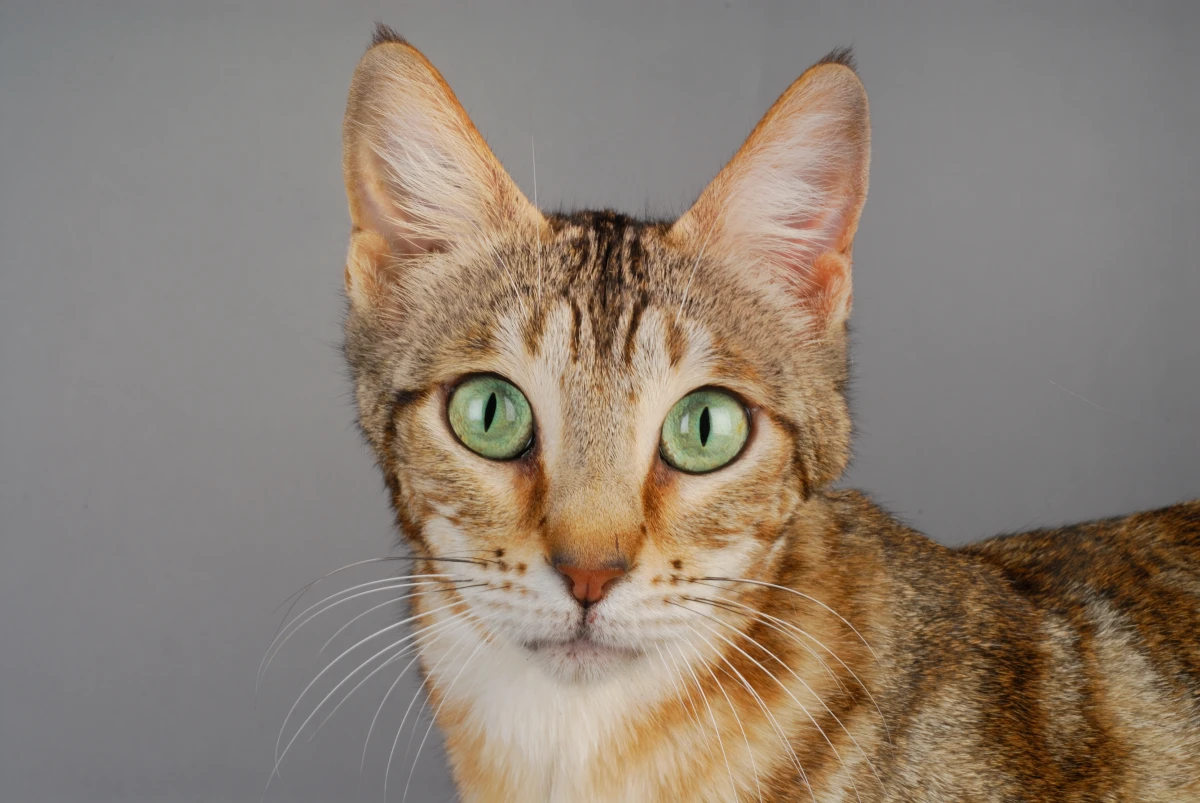
The Look: The Mau is the only naturally spotted domestic cat. On other breeds like the Bengal, the spots were introduced from wild cat hybrids. A Mau’s spots are just part of their natural tabby pattern. They are also famous for a flap of skin that runs from their belly to their back knee, which allows for a longer stride and makes them one of the fastest domestic cats around.
Living With One: Maus are incredibly loyal to their family but can be very shy with strangers. They are sensitive souls who don’t do well in loud, chaotic homes. They’re active, smart, and have a surprisingly sweet, musical voice—they often “chortle” to chat with you.
- Best For: A quiet, stable home with experienced cat owners who understand and respect a sensitive temperament.
- Price Tag: A kitten will likely cost between $1,500 and $2,500.
- Ask a Breeder: “Have any cats in your lines shown a sensitivity to anesthesia? What should I tell my vet?” This is a known precaution in the breed and a good breeder will appreciate the question.
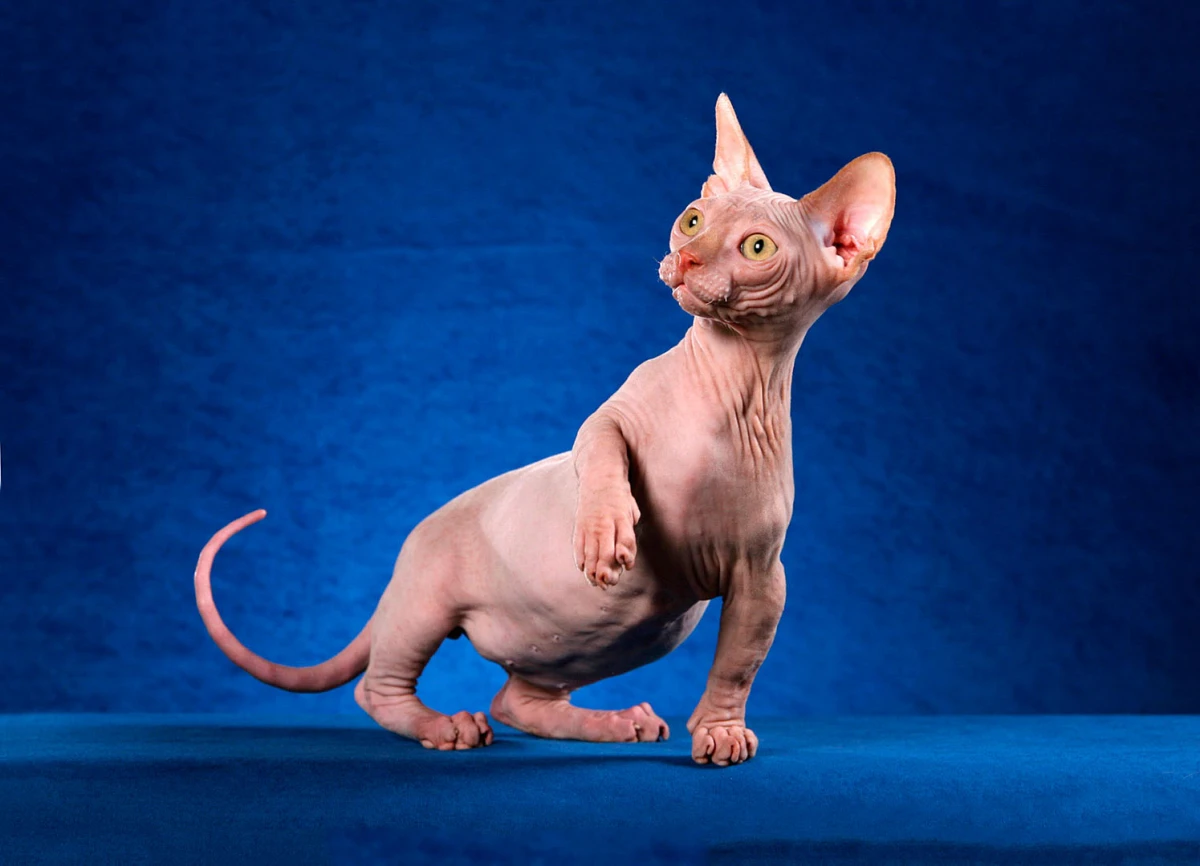
9. The Sokoke: The Forest Cat from Kenya
Honestly, the Sokoke is one of the rarest breeds you could ever hope to meet. They come from a forest region in Kenya. At first, people thought they were some kind of wild-domestic hybrid, but DNA has confirmed they are a unique domestic breed all their own. Their population is tiny, making them a true preservation effort.
The Look: Their coat is their most unique feature. It’s a modified tabby pattern called “blotched” that looks like tree bark—perfect camouflage. They are lean, leggy, and elegant with a wild look that is absolutely captivating.
Living With One: Sokokes are very active and whip-smart. They are incredibly social with their chosen family and are known for being very in-tune with their owner’s emotions. They are also very chatty! Being a breed from a warm climate, they don’t handle cold well and will always be seeking the warmest spot in the house. Because the breed is so new, the long-term health picture is still developing, which is why working with a preservation-focused breeder is the only way to go.
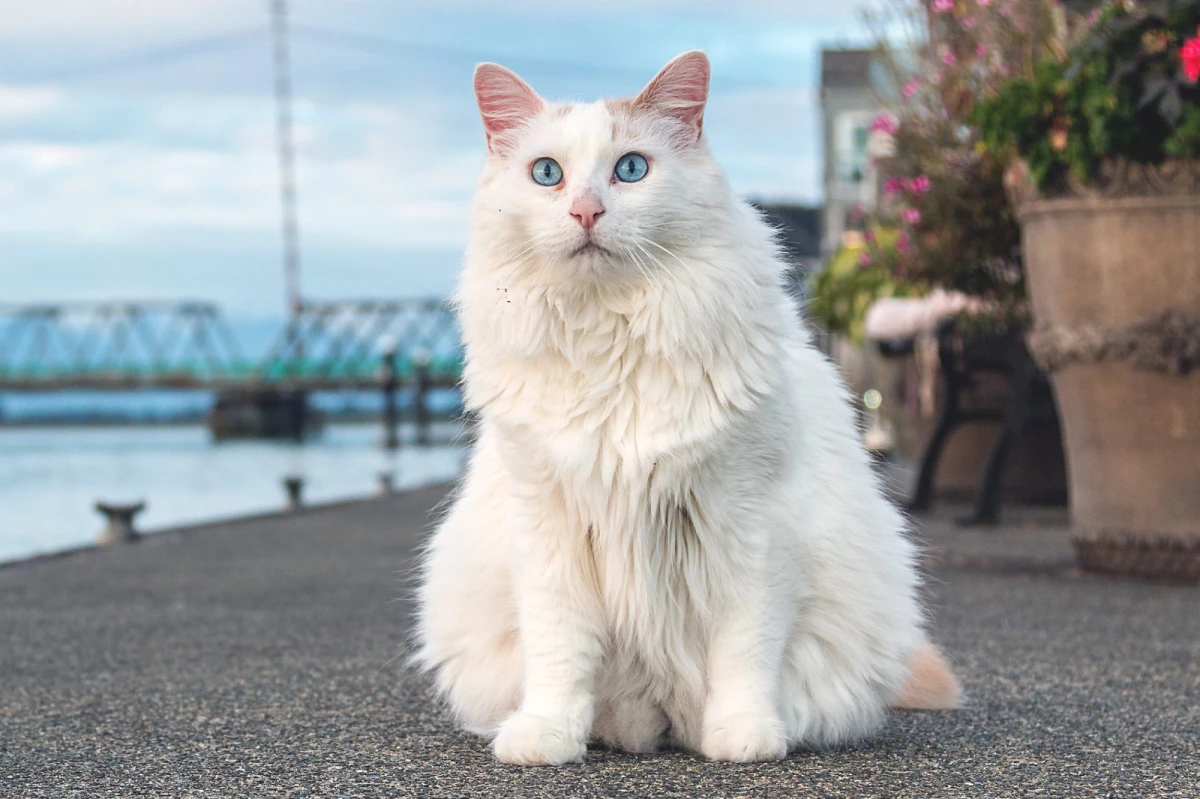
- Best For: Experienced, dedicated owners who want to be part of a conservation story and can provide a warm, stimulating environment.
- Price Tag: Very rare and very expensive. Expect to pay $2,000 to $3,500 or more, and be prepared to go on a waiting list.
- Ask a Breeder: “What is your goal for this breed, and how do you contribute to its long-term health and genetic diversity?”
10. The Minskin: The Modern Mix
The Minskin is a very new breed, developed with the specific goal of creating a cat with short legs and sparse fur mostly on the face, ears, legs, and tail. The breed was created by mixing the Munchkin (for short legs), the Sphynx (for hairlessness), the Devon Rex, and the Burmese.
The Look: It’s a genetic cocktail! The short legs are a dominant gene, while the hairlessness is recessive. This means you can get kittens with long or short legs, with or without hair. A true “Minskin” has short legs and those “fur-points.”
Living With One: Minskins are generally outgoing, sweet, and playful little cats. They get along well with kids and other pets. Despite their short legs, they can get around just fine, but they aren’t going to be leaping onto the fridge. Their sparse coat means they need protection from sunburn and cold, and they require regular baths to manage skin oils, just like a Sphynx.
- Best For: Owners who understand their special care needs (skin care, protection from elements) and are looking for a quirky, affectionate companion.
- Price Tag: Given the complexity of breeding, expect a price in the $2,000 to $3,500 range.
- Ask a Breeder: “How do you screen for spinal issues like lordosis? Can you explain the health of the parents?” This is critical for any breed with dwarfism.
The Bottom Line: Responsibility, Cost, and Finding Your Cat
Admiring these breeds is one thing, but bringing one home is a huge commitment. Rarity almost always means a smaller gene pool, which makes the breeder’s job incredibly important. A good breeder is a steward of the breed, doing tons of health screening. That’s why the prices are high—you’re paying for responsible care and a commitment to health.
If you’re serious, don’t just search online marketplaces. Your first and best step is to go to the official breeder directories on the websites of major cat registries, like The International Cat Association (TICA) or the Cat Fanciers’ Association (CFA). That’s where you’ll find people who are serious about their breeds.
And please, don’t pick a cat from a picture. A high-octane Devon Rex will be miserable if you’re gone ten hours a day, and a sensitive Egyptian Mau will be stressed out by a loud family with toddlers. Be honest about your life. A rare cat is a partnership that could last twenty years. It’s a decision that deserves your time, your research, and a whole lot of respect.
Inspirational Gallery with Photos
How do you tell a passionate, ethical breeder from a potential scam?
Look for transparency and a genuine love for the breed’s future. A responsible breeder, like those registered with The Cat Fanciers’ Association (CFA) or The International Cat Association (TICA), will have a long waiting list, ask you as many questions as you ask them, and provide comprehensive health records for the kitten and its parents, including genetic testing for known breed-specific conditions like HCM (Hypertrophic Cardiomyopathy).
The entire global population of the Sokoke cat, a rare breed from Kenya, is believed to have descended from just a handful of individuals.
This creates what is known as a genetic bottleneck. While it preserves the unique look of the breed, it makes responsible breeding practices absolutely critical to avoid the concentration of hereditary health problems. It’s a delicate balancing act between preservation and promoting genetic diversity.
The wild at heart: Breeds like the Savannah or Bengal have energy levels that rival a toddler’s after three cupcakes. To keep them happy and prevent destructive behavior, think vertically.
- Install multi-level cat trees that reach near the ceiling. Brands like Cat-on and Trixie offer sturdy, tall models.
- Clear wall shelves can become a feline highway, offering vantage points and exercise routes.
- Invest in puzzle feeders and high-intensity wand toys to engage their sharp minds and hunting instincts daily.
Thinking of a Lykoi, the so-called “werewolf cat”? Their unique, partially hairless coat isn’t just a cool aesthetic. It requires specific care. Due to the lack of a full undercoat, their skin is more exposed. This means they can get oily and may need occasional baths with a gentle, hypoallergenic pet shampoo. They are also more sensitive to sun and cold, so a cozy indoor life is a must.
Cornish Rex Coat: Imagine stroking fine, crushed velvet. It’s a single layer of soft, downy hair that lies in tight, uniform waves. No guard hairs mean they feel incredibly warm to the touch.
Devon Rex Coat: A more mischievous texture. The coat is also curly, but it’s a looser, more tousled curl composed of all three hair types (guard, awn, and down), giving it a unique, suede-like feel that can be sparse in some areas. Both require gentle grooming to protect their delicate fur.
- They solve complex puzzle toys in minutes.
- They learn to open doors or cabinets.
- They seem to understand your moods uncannily.
The secret? Many rare breeds, particularly ancient ones like the Turkish Angora or modern hybrids like the Chausie, possess exceptionally high intelligence. This creates an intense bond but requires constant mental stimulation to prevent boredom and mischief. They aren’t just pets; they’re clever companions who demand engagement.
Don’t just budget for the purchase price, which can run into the thousands. The real investment is in their lifelong care. Because of limited gene pools, some rare breeds can be prone to specific health issues. A comprehensive pet insurance plan from a provider like Trupanion or Nationwide, which covers hereditary and congenital conditions, isn’t a luxury—it’s an essential part of responsible ownership for these special felines.
The allure of a Peterbald or a Donskoy isn’t just their hairlessness; it’s the unique sensory experience. Their skin feels like warm suede or a soft peach, and their body temperature runs slightly higher. This warmth-seeking behavior means you’ll often find them snuggled under blankets, on a sunlit windowsill, or curled up tightly against you, making for an incredibly close and physical bond.










